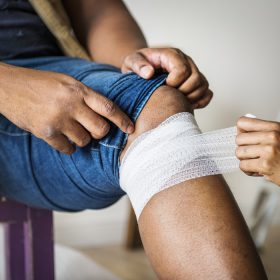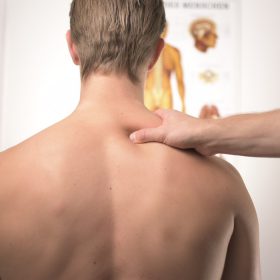Problem
 Often not diagnosed quickly, osteoporosis is known as a silent disease as it sometimes goes unnoticed. Osteoporosis affects some 44 million women over the age of fifty in the United States according to the International Osteoporosis Foundation. Younger women and men may also develop this affliction. Osteoporosis literally mean porous bones and it develops as the body loses too much bone, makes too little bone or both. Often, osteoporosis does not display any obvious symptoms or discomfort. In other words, you don’t feel your bones weakening until you eventually experience bone fractures.
Often not diagnosed quickly, osteoporosis is known as a silent disease as it sometimes goes unnoticed. Osteoporosis affects some 44 million women over the age of fifty in the United States according to the International Osteoporosis Foundation. Younger women and men may also develop this affliction. Osteoporosis literally mean porous bones and it develops as the body loses too much bone, makes too little bone or both. Often, osteoporosis does not display any obvious symptoms or discomfort. In other words, you don’t feel your bones weakening until you eventually experience bone fractures.
It is considered to be a major public health threat as it readily affects so many people. It is estimated that one in two women and up to one in four men over the age of 50 will break a bone due osteoporosis!
The most common symptoms of osteoporosis include:
 Osteoporotic bone breaks. Fractures and breaks most commonly occur in the hip, spine or wrist bones. They also affect the feet, knees and other parts of the body.
Osteoporotic bone breaks. Fractures and breaks most commonly occur in the hip, spine or wrist bones. They also affect the feet, knees and other parts of the body.- Limited mobility, trouble getting around and difficulty completing everyday activities. Many elderly adults who break a bone will need to live long-term in nursing homes or will require assistance from an aid in their home.
- Bone pain, sometimes which is permanent and intense.
- Loss of height.
- Hunched or stooped posture. This occurs because the vertebrae, the bones of the spine, can become weaker.
Having osteoporosis can be quite emotionally devastating. One is at a loss due to lack of mobility and it can be life-threatening. The following natural handling of osteoporosis should be considered as you can strengthen the weakened areas. Osteoporosis should not be taken lightly, since weak and broken bones can be difficult to treat and cope with.
Solution
 Treating osteoporosis naturally can be quite effective. This includes sufficient exercise, especially resistance training, preventing Vitamin D deficiencies and eat healthy and naturally. Diet plays a critical role in bone health. You must be taking in enough protein, vitamins and minerals, in particular, calcium, magnesium, phosphorous and manganese. These minerals are critical to bone development.
Treating osteoporosis naturally can be quite effective. This includes sufficient exercise, especially resistance training, preventing Vitamin D deficiencies and eat healthy and naturally. Diet plays a critical role in bone health. You must be taking in enough protein, vitamins and minerals, in particular, calcium, magnesium, phosphorous and manganese. These minerals are critical to bone development.
Here are five natural steps to help reduce excessive bone loss:
- Nourish your body with basic nutrients.
- Provide your body with specific bone-building nutrients.
- Eat an alkalizing diet.
- Generate stronger bone with some exercise.
- Minimize your stress.


